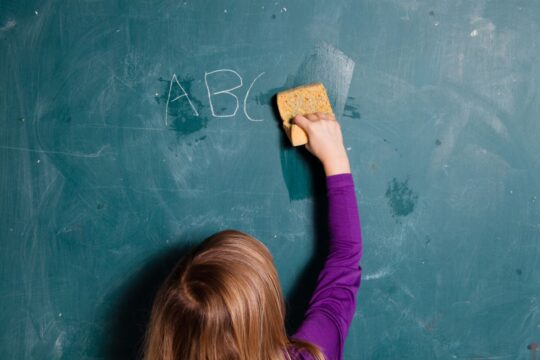How do you teach students to care? Is it even possible? Teaching students to care can feel like a tall order as an educator, but it’s absolutely possible. Developing empathy starts with helping kids become more aware of others’ feelings.
When students learn to express their feelings and understand others’ needs, they can interact better. This helps them avoid unpleasant situations and conflicts.
While teaching empathy might seem challenging, it can be incredibly rewarding. When students feel safe and have the tools to solve conflicts peacefully, your classroom becomes a place of understanding and respect.
Practice Empathy
Start with a Discussion
A great starting point is simply discussing empathy in the classroom. Ask a few basic questions to gauge what they already know and where their understanding is:
- What is empathy? Why is it important?
- What are some things you can do to show empathy?
- What does it mean to put yourself in someone else’s shoes?
- Have you ever hurt someone’s feelings? How did you know, and how did you feel?
These questions spark important conversations and encourage students to see the value of empathy in their everyday interactions.
Share Personal Stories
To help students better understand feeling empathy, have them share their stories with the class. This will help students understand each other’s feelings. It will also make it easier to see why someone acts or reacts in a certain way. The more students know and understand about their classmates, the easier it will be for them to understand them.
Walk around the classroom and ask each student to share a story. They can discuss a time they hurt someone’s feelings or when someone hurt theirs. Encourage them to explain how it made them feel.
Always “ask” students if they feel comfortable sharing. If they do not, then move on to another student who does. You might ask the student who doesn’t want to share to tell a story about someone they know. This way, they can share without talking about themselves.
Take It One Feeling at a Time
To help students better understand their emotions, try focusing on one feeling at a time. Start with something like embarrassment. Ask students to think about a time when they felt embarrassed and have them draw a picture on a sticky note representing that moment.
Next, write the word “embarrassed” on the board and have students place their sticky notes around it. Discuss the drawings as a class, discussing what makes them feel this way. Each day, introduce an emotion and repeat the process.
This activity builds emotional awareness and could create a beautiful “Empathy Bulletin Board” filled with their insights and drawings. If students do not feel comfortable sharing, encourage them to think about how someone else might feel. They can draw or write about that person.
Learn When to Show Empathy
A fun activity that helps students think about empathy is to give them some scenarios. They can decide if empathy is needed and explain why. Here are a few scenarios to share with students.
- You’ve been best friends with “Joe” since you were babies. Now you have another close friend too, but “Joe” isn’t happy about it and doesn’t want you to be friends with the new person. Your new friend is upset. What should you do?
- A classmate has been teasing another student. At first, the activity seemed like harmless fun, but now it’s clear that the other student feels hurt. The rest of the class still thinks it’s funny. What do you do?
- Your best friend is having a birthday sleepover on Saturday. But your parents just surprised you with tickets to your favorite concert that same night. What’s the best way to handle this?
These types of questions help students reflect on their actions and choose empathy over conflict.
Create a Conflict Resolution Plan
Learning to be empathetic will help students with conflict among their peers. A good idea is to give students a simple empathy prompt.
This can help them share their feelings when something happens. For example, the prompt may be: “When you “tease/judge/laugh” at me, it profoundly makes me feel “sad/angry.” Then students can continue to explain what they would like their peers to do next time.
Be the Role Model Students Need
Students are sponges and absorb everything they see and hear. That is why it’s so important to be an example of empathy and kindness in your classroom.
When you handle a crisis or challenge, do it with patience. Your students will see how you handle difficult moments. If you are treating others with respect, your students will take note.
No matter how small an interaction, your students are watching how you will react. Instead of reacting with frustration, react calmly. This will show students that even when things don’t always go our way, we are still in control of the way we react to things. The way you treat others in the classroom will set the tone for how your students will treat each other.
Teaching empathy is about creating a classroom environment where students feel safe, understood, and supported. When you show kindness and empathy, you help create caring people. They will take these lessons with them into the world.
Educators never stop learning; check out our available graduate degree programs to hone your skills and promote lifelong learning and academic excellence.




